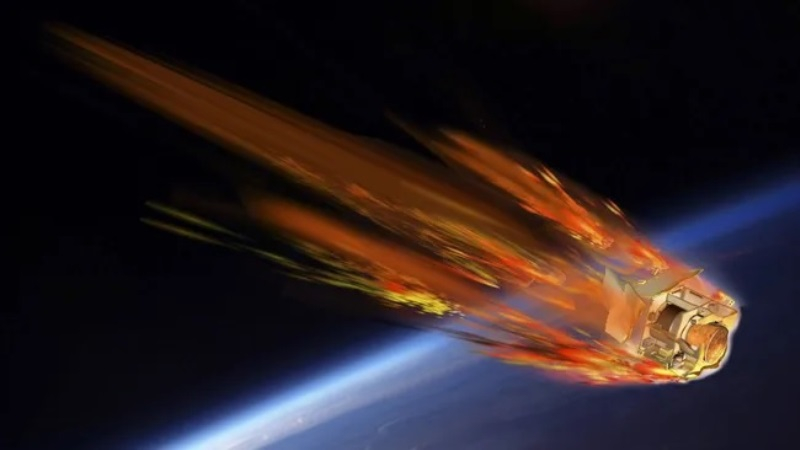The European Space Agency (ESA) plans to launch a satellite to closely study how it will burn up as it enters Earth’s atmosphere. The project is being implemented jointly with the European technology group Deimos, which will create a test apparatus called the Destructive Reentry Assessment Container Object (DRACO).

Image source: ESA/D. Ducros
DRACO will be used to collect unique data as it returns to Earth and burns up in the atmosphere. The implementation of the mission is planned for 2027. The goal is to understand how satellites break up. This is necessary in order to design future spacecraft in such a way that they completely burn up in the atmosphere. The mission will also provide a more detailed assessment of how re-entering satellites affect the environment.
The size of a washing machine and weighing 200 kg, DRACO will be designed to disintegrate upon re-entry in the same way as a conventional satellite. Its design will include a 40-centimeter capsule that will be able to withstand the load when entering the atmosphere, while collecting various data, measuring temperature and recording other parameters. After entering the atmosphere, the parachute will open and the capsule will smoothly descend, transmitting the collected data to Earth, for which four cameras and 200 different sensors will be placed in DRACO.
«Knowledge of atmospheric reentry is an important element in the development of disaster response capabilities. We need to get more information about what happens when satellites burn up in the atmosphere, and also test the re-entry models we use. That’s why the unique data collected by DRACO will help develop new technologies to create more fully destroyable satellites by 2030,” said Holger Krag, head of space flight safety at ESA.